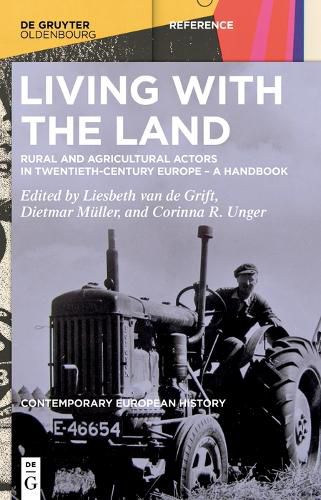Readings Newsletter
Become a Readings Member to make your shopping experience even easier.
Sign in or sign up for free!
You’re not far away from qualifying for FREE standard shipping within Australia
You’ve qualified for FREE standard shipping within Australia
The cart is loading…






This title is printed to order. This book may have been self-published. If so, we cannot guarantee the quality of the content. In the main most books will have gone through the editing process however some may not. We therefore suggest that you be aware of this before ordering this book. If in doubt check either the author or publisher’s details as we are unable to accept any returns unless they are faulty. Please contact us if you have any questions.
For a long time agriculture and rural life were dismissed by many contemporaries as irrelevant or old-fashioned. Contrasted with cities as centers of intellectual debate and political decision-making, the countryside seemed to be becoming increasingly irrelevant. Today, politicians in many European countries are starting to understand that the neglect of the countryside has created grave problems. Similarly, historians are remembering that European history in the twentieth century was strongly influenced by problems connected to the production of food, access to natural resources, land rights, and the political representation and activism of rural populations. Hence, the handbook offers an overview of historical knowledge on a variety of topics related to the land. It does so through a distinctly activity-centric and genuinely European perspective. Rather than comparing different national approaches to living with the land, the different chapters focus on particular activities - from measuring to settling the land, from producing and selling food to improving agronomic knowledge, from organizing rural life to challenging political structures in the countryside. Furthermore, the handbook overcomes the traditional division between East and West, North and South, by embracing a transregional approach that allows readers to gain an understanding of similarities and differences across national and ideological borders in twentieth-century Europe.
$9.00 standard shipping within Australia
FREE standard shipping within Australia for orders over $100.00
Express & International shipping calculated at checkout
This title is printed to order. This book may have been self-published. If so, we cannot guarantee the quality of the content. In the main most books will have gone through the editing process however some may not. We therefore suggest that you be aware of this before ordering this book. If in doubt check either the author or publisher’s details as we are unable to accept any returns unless they are faulty. Please contact us if you have any questions.
For a long time agriculture and rural life were dismissed by many contemporaries as irrelevant or old-fashioned. Contrasted with cities as centers of intellectual debate and political decision-making, the countryside seemed to be becoming increasingly irrelevant. Today, politicians in many European countries are starting to understand that the neglect of the countryside has created grave problems. Similarly, historians are remembering that European history in the twentieth century was strongly influenced by problems connected to the production of food, access to natural resources, land rights, and the political representation and activism of rural populations. Hence, the handbook offers an overview of historical knowledge on a variety of topics related to the land. It does so through a distinctly activity-centric and genuinely European perspective. Rather than comparing different national approaches to living with the land, the different chapters focus on particular activities - from measuring to settling the land, from producing and selling food to improving agronomic knowledge, from organizing rural life to challenging political structures in the countryside. Furthermore, the handbook overcomes the traditional division between East and West, North and South, by embracing a transregional approach that allows readers to gain an understanding of similarities and differences across national and ideological borders in twentieth-century Europe.